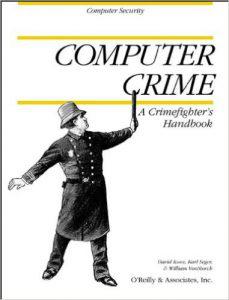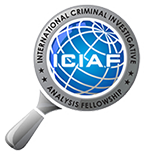Computer Crime: A Crimefighter’s Handbook (Computer Security)
Authors:
David Icove, Karl Seger, William VonStorch

Terrorist attacks on computer centers, electronic fraud on international funds transfer networks, viruses and worms in our software, corporate espionage on business networks, and crackers breaking into systems on the Internet…Computer criminals are becoming ever more technically sophisticated, and it’s an increasing challenge to keep up with their methods. Computer Crime: A Crimefighter’s Handbook is for anyone who needs to know what today’s computer crimes look like, how to prevent them, and how to detect, investigate, and prosecute them if they do occur. It contains basic computer security information as well as guidelines for investigators, law enforcement, and computer system managers and administrators. Part I of the book contains a discussion of computer crimes, the computer criminal, and computer crime laws. It describes the various categories of computer crimes and profiles the computer criminal (using techniques developed for the FBI and other law enforcement agencies). Part II outlines the the risks to computer systems and personnel, operational, physical, and communications measures that can be taken to prevent computer crimes. Part III discusses how to plan for, investigate, and prosecute computer crimes, ranging from the supplies needed for criminal investigation, to the detection and audit tools used in investigation, to the presentation of evidence to a jury. Part IV of the book contains a compendium of the computer-related U.S. federal statutes and all of the statutes of the individual states, as well as representative international laws. Part V contains a resource summary, detailed papers on computer crime, and a sample search warrant for a computer crime.
Cite
Icove, David J., Karl A. Seger, and William R. VonStorch. Computer Crime: A Crimefighter’s Handbook. Sebastopol, CA: O’Reilly & Associates, 1995. Print.
Purchase a Copy
ISBN-10: 1565920864
ISBN-13: 978-1565920866
